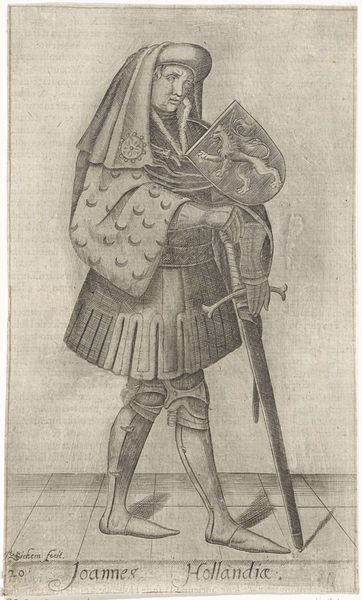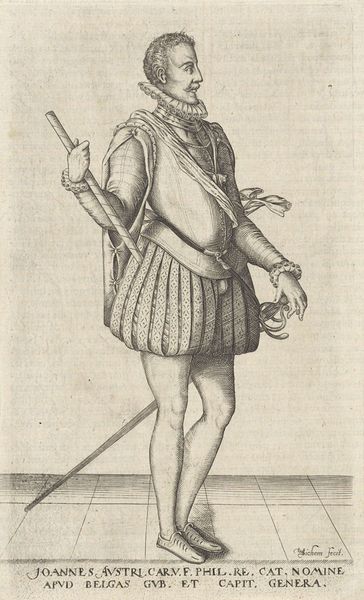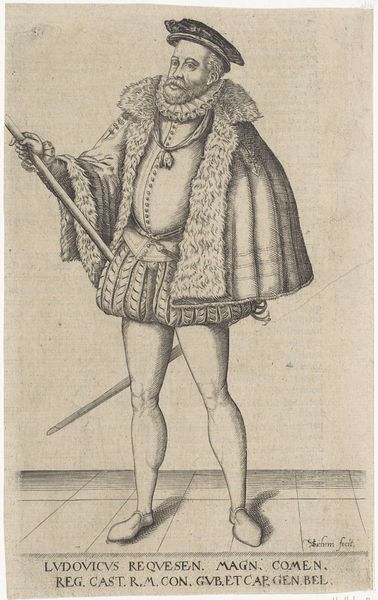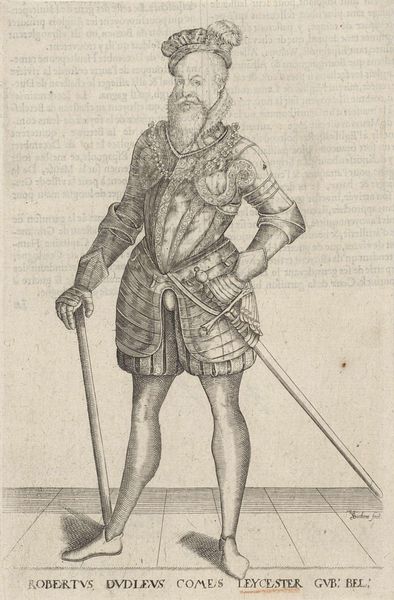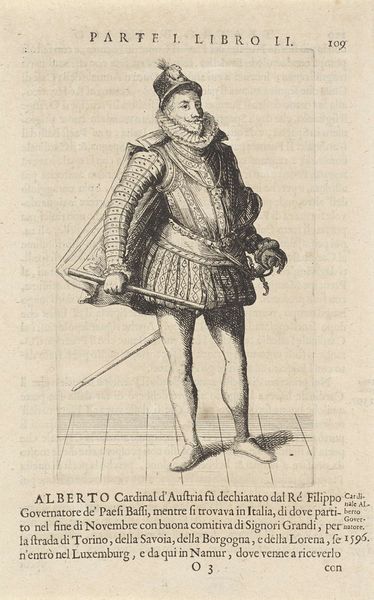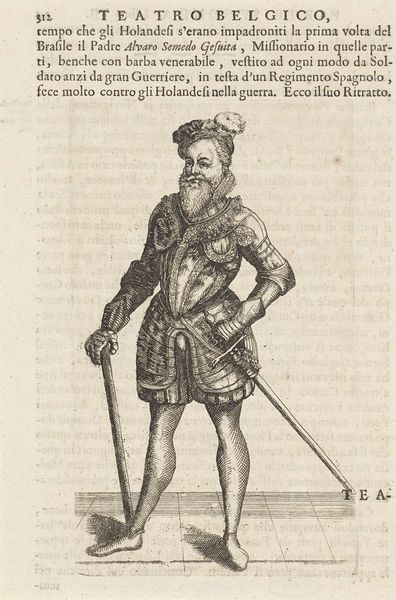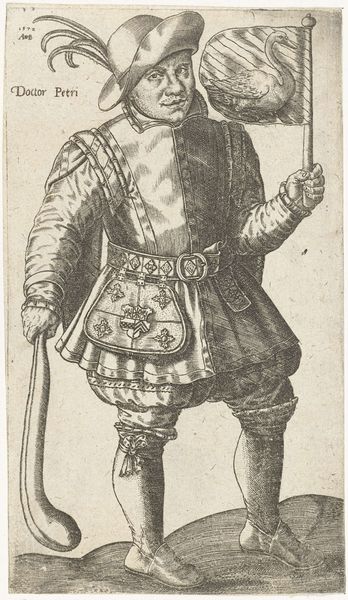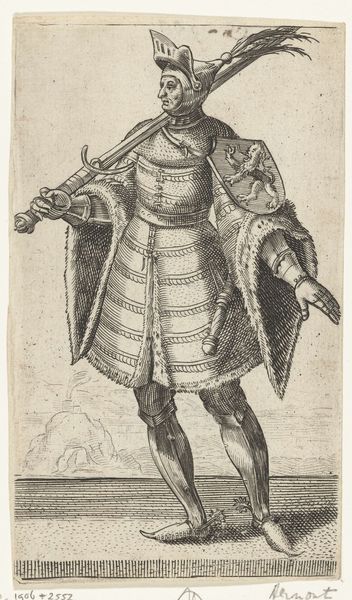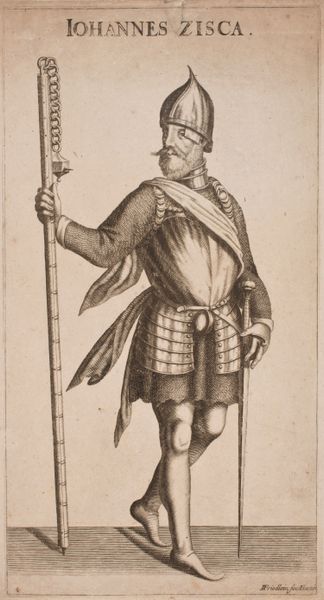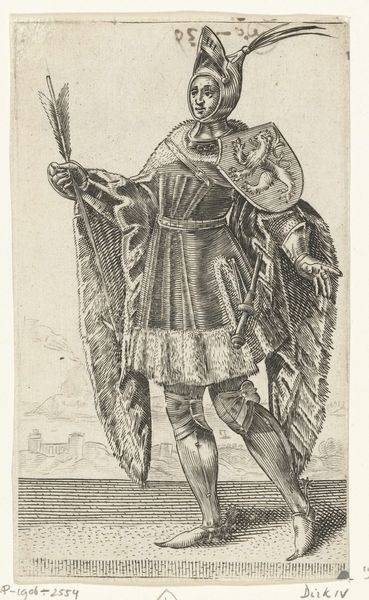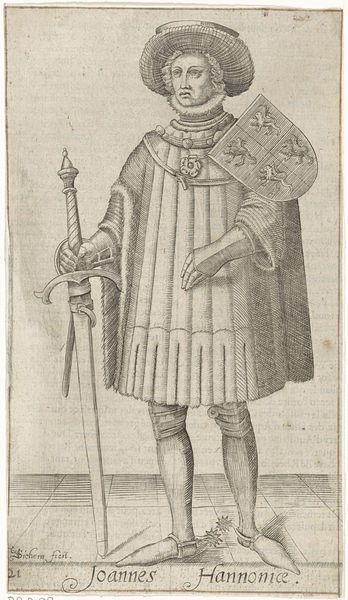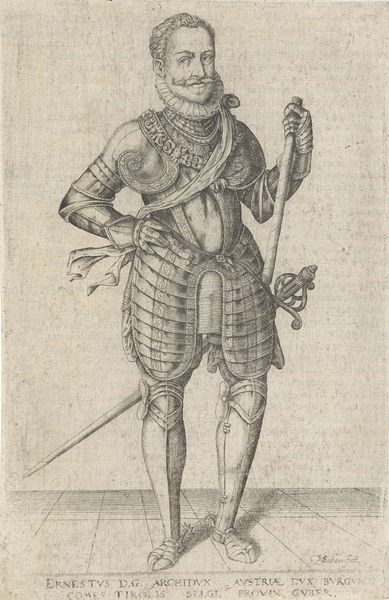
Portret van Matthias van Oostenrijk, Rooms-Duits keizer before 1601
0:00
0:00
christoffelvansichemi
Rijksmuseum
engraving
#
portrait
#
figuration
#
11_renaissance
#
history-painting
#
northern-renaissance
#
engraving
Dimensions: height 198 mm, width 121 mm
Copyright: Rijks Museum: Open Domain
Curator: Standing before us is a striking engraving entitled "Portret van Matthias van Oostenrijk, Rooms-Duits keizer," or "Portrait of Matthias of Austria, Holy Roman Emperor" before 1601 by Christoffel van Sichem I, found here in the Rijksmuseum. Editor: My first thought? Austere elegance. There’s a pronounced rigidity to the pose and clothing that speaks volumes about power. I can see the careful layering of textures, even within the confines of an engraving, points towards someone keen on material display. Curator: Absolutely. Matthias's identity as Emperor is intrinsically linked to these very signifiers. His attire communicates power, position, and perhaps even aspiration given the historic complexities surrounding his role as Holy Roman Emperor and the various political conflicts that surrounded him at the time. The very act of commissioning this portrait speaks to the politics of image and representation during the period. Editor: You know, the crisp detail achieved through the engraving process—look at the ruff around his neck!—is particularly compelling. It also tells us about the skilled labor involved. The materials were quite limited here, but the labor needed in developing these complex patterns for reproducibility speaks to a fascinating dichotomy within its sociohistorical context. Curator: And that context is crucial. The Northern Renaissance, with its deep engagement with detail and realism, becomes evident. This work also embodies the tense dynamic of the historical time, where family politics intertwined with matters of faith and expanding societal movements. It would be great to investigate who and how Sichem and his workshop was commissioned, and by whom. Editor: The deliberate lines forming a stark black and white image, made possible through the transfer of this work to reproducible print also points towards the beginning of a shift, democratizing the portrait of powerful figures, taking what was initially unique to those in the space of oil painting. Curator: Ultimately, this portrait not only depicts a ruler but invites us to dissect how identity, authority, and cultural context converged within a singular historical moment. It provokes necessary discussions around identity and historical intersectionality. Editor: The print highlights labor—the making and distributing and, thus, the beginnings of accessibility and what comes with the move from canvas to mass production.
Comments
No comments
Be the first to comment and join the conversation on the ultimate creative platform.
